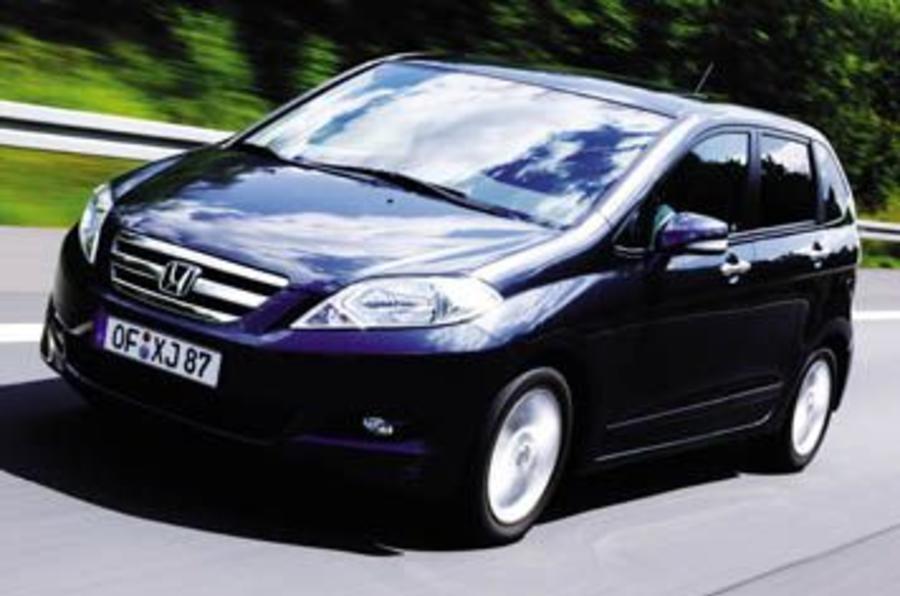This doesn’t sound promising, but the Honda FR-V bears more than a passing resemblance to two of the most reelingly ugly MPVs ever – the Fiat Multipla and the Pontiac Aztek.
With the Fiat it shares the same seating configuration – two rows of three – and with the Aztek, a device whose shockingly gruesome looks encapsulated much that was wrong with GM before Bob Lutz arrived, the Honda shares something of its aft-end styling.
But the difference is that the Honda is not ugly. It’s no beauty either, but there’s a freshness in its proportions that has it growing on you. Not that people buy these things to win beauty contests. MPVs are for carting people and stuff, and Honda reckons that this new six-seater is pretty good at doing both.
The FR-V is another alternative to the Renault Scénic, Ford C-Max, Citroën Picasso, Vauxhall Zafira and, indeed, the recently blandified Fiat Multipla, as well as Honda’s own Stream.
The six-seat Stream will continue, although at £17,013 it’s hard to see it selling in big numbers when the FR-V will be offered from £15,000-£17,000 when it goes on sale this November. The FR-V range will initially offer a couple of petrol engines – a 123bhp sohc VTEC 1.7-litre or a 148bhp dohc i-VTEC 2.0-litre – and from spring next year Honda’s excellent 138bhp 2.2-litre diesel. But for now, we get to try the six-speed 2.0-litre petrol.
Before engaging a gear, a few factoids about what we’re driving here. A relative of the CR-V, the FR-V nominally shares the same platform, though more in build than body structure. It’s possible to manufacture the two on the same production line, despite the FR-V’s entirely new floor pressing, required to cater for its extra width and to provide a flat floor.
The FR-V does share part of its front subframe with the CR-V, its suspension is similar and the back end gets an additional reactive link to produce more stabilising toe-in of the wheels. The springs are slightly less firm than the CR-V’s, to soften the ride, and the FR-V’s track is wider, reducing body roll in corners. And there’s more resistance to dive and squat, too.
Climb aboard – easy, via the wide-opening doors – and you face a modern, multi-layered dash whose focal point is not so much the instruments as the centre console, as is the trend. It contains an infotainment display screen similar to the Accord’s – sat-nav is an option – as well as the gearlever which, like the Multipla’s and the Civic’s, sprouts from the dash.
The umbrella handbrake lurking below the fascia is a pain, but apart from grappling with this, the FR-V is a straightforward drive. Forward visibility is good (though reversing is more of a challenge with the fat back pillars,) the controls are light and of an action familiar to anyone who has driven a Honda before. Also familiar is the near-silence at idle, which contrasts with some mild thrashiness when you stretch it.
Luckily the noise isn’t too pervasive, because the 140lb ft torque peak doesn’t appear until 4000rpm, demanding busy use of an acceptably cooperative gearchange.
The FR-V is fairly deft in corners, roll being as limited as its broad-shouldered stance implies and it will, if pressed, scribe a curve with some speed – and tuck its nose in quite markedly should you dethrottle mid-bend. You wouldn’t call it sporting, but it does the job.















Add your comment